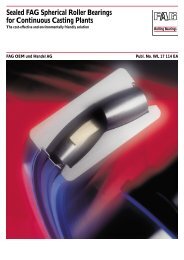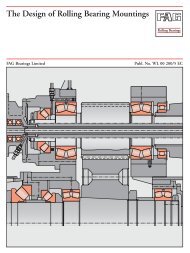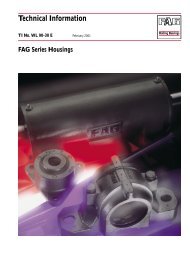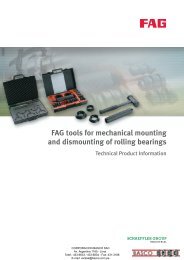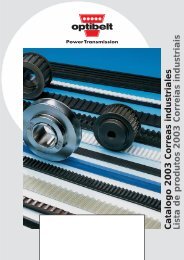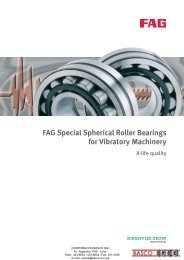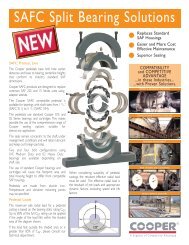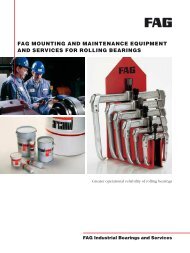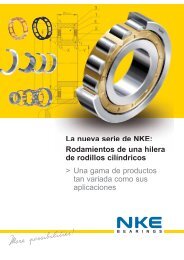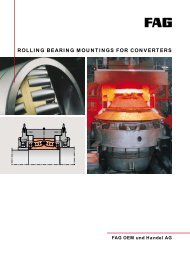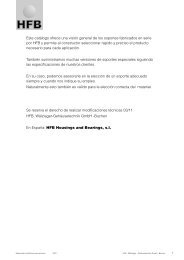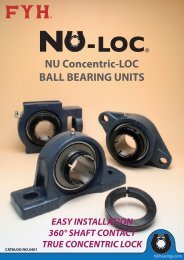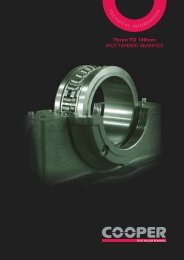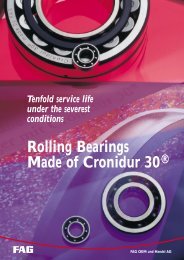Custom Classics Catalog
Custom Classics Catalog
Custom Classics Catalog
Create successful ePaper yourself
Turn your PDF publications into a flip-book with our unique Google optimized e-Paper software.
MASTER ®<br />
XL Right Angle and Gearmotors<br />
Many of the XL reducers and gearmotors have part numbers<br />
that can be found on the selection pages. Refer to the part<br />
number when ordering. Always specify a mounting position if<br />
other than standard, and any modifications or accessories, if<br />
required.<br />
If a part number is not listed on the selection table please<br />
provide the following information when placing your order.<br />
1. Motor H.P., frame enclosure, phase, voltage and frequency.<br />
2. Reducer or gearmotor size.<br />
3. Output RPM and gear ratio.<br />
4. Mounting position.<br />
5. Any modifications or accessories.<br />
SELECTION FACTORS<br />
To apply a Reducer or Gearmotor properly, the following facts<br />
must be considered:<br />
1. The kind of load, reversing, amount of shock, duty cycle,<br />
etc.<br />
2. Type of transmission: direct connected, sprocket and<br />
chain, pinion and gear, V-belt, or flat belt.<br />
3. The point of application of the load if over-hung.<br />
4. Possibility of stalling.<br />
5. Retarding torque of Unibrake or other brake.<br />
6. Size of flywheel if used or WK 2 or inertia effect of the load.<br />
7. Surrounding conditions, normal, dusty, outdoor, hazardous<br />
vapor or dust, moisture, or acid or alkali fumes, or<br />
abnormal ambient temperatures.<br />
8. Mounting: floor, sidewall, ceiling, vertical or inclined.<br />
9. Electrical characteristics of the motor.<br />
10. Complete duty cycle.<br />
11. Horsepower or torque required.<br />
12. Output shaft rpm.<br />
SELECTION EXAMPLE: A C-face right angle reducer is<br />
required to drive a continuous belt conveyor. The prime mover<br />
is a 1750 rpm electric motor. The conveyor will see a moderate<br />
amount of shock loading. The reducer output shaft must drive<br />
the conveyor at approximately 20 rpm. Conveyor load averages<br />
1500 in. lbs. (750 lbs. over 2” radius pulley) and the duty cycle<br />
is 24 hours per day.<br />
STEP 1: Reducer Service Factor Table on this page indicates<br />
a 1.50 service factor. (Under headings: electric motor, 24 hours<br />
per day service and medium load classification). Equivalent<br />
load = 1500 in. lbs. x 1.50 = 2250 in. lbs. Ratio is calculated by<br />
dividing input speed (1750 rpm) by required output speed (in<br />
this case, 20 rpm). 1750 ÷ 20 = 87.5 ratio.<br />
STEP 2: To determine minimum HP required refer to the<br />
Right Angle Gearmotor tables on pages D2-28 to D2-36.<br />
In our example, find the output torque rating for 86:1 ratio<br />
that exceeds our requirement of 1,500 in. lbs. Refer to page<br />
HOW TO ORDER<br />
D2-30. Note the torque value of 1,766 in. lbs. exceeds our<br />
requirement. Also make note of the reducer size... CG16A.<br />
STEP 3: Verify selected reducer is rated for 1.5 Service Factor.<br />
As we determined earlier, this will require a torque capability of<br />
2,250 in. lbs. Refer to the rating table for size CM16 reducers<br />
on page D2-20. The torque rating for a 86:1 ratio at 1750 RPM<br />
is 2,522 in. lbs. which exceeds our requirement.<br />
STEP 4: Select motor frame size and refer to appropriate part<br />
number.<br />
STEP 5: If the output shaft is connected by other than a flexible<br />
coupling, calculate the OVERHUNG LOAD.<br />
OVERHUNG LOAD<br />
To determine overhung load, divide the torque required by the<br />
pitch radius of the sprocket, sheave, etc. and multiply by the<br />
appropriate factor as follows:<br />
Chain Drive 1.00 V-Belt 1.50<br />
Synchronous Belt Drive 1.10 Flat Belt 2.50<br />
Spur or Helical Gear 1.25<br />
The calculated overhung load must not exceed the Output<br />
Shaft rating.<br />
For loads acting at more than one shaft diameter from bearing<br />
housing, use following conversion factors:<br />
Distance in Shaft Diameters<br />
From Brg. Hsg.<br />
Multiply OHL Capacity By This<br />
Factor<br />
1D 1.0<br />
2 D .65<br />
3 D .45<br />
4 D .35<br />
5 D .30<br />
Reducer Service Factors<br />
Prime Mover<br />
Electric<br />
Motor<br />
Driven Machine<br />
Duration of<br />
Load Classification<br />
Service<br />
Medium Heavy<br />
Per Day Uniform<br />
Shock Shock<br />
Occasional 1/2 hr. 0.80 0.90 1.00<br />
Intermittent 2 hrs. 0.90 1.00 1.25<br />
10 hours 1.00 1.25 1.50<br />
24 hours 1.25 1.50 1.75<br />
Electric Motor Occasional 1/2 hr. 0.90 1.00 1.25<br />
With Frequent Intermittent 2 hrs. 1.00 1.25 1.50<br />
Starts and 10 hours 1.25 1.50 1.75<br />
Stops 24 hours 1.50 1.75 2.00<br />
Multi-cylinder Occasional 1/2 hr. 0.90 1.00 1.25<br />
Internal Intermittent 2 hrs. 1.00 1.25 1.50<br />
Combustion 10 hours 1.25 1.50 1.75<br />
Engine 24 hours 1.50 1.75 2.00<br />
Single Cylinder Occasional 1/2 hr. 1.00 1.25 1.50<br />
Internal Intermittent 2 hrs. 1.25 1.50 1.75<br />
Combustion 10 hours 1.50 1.75 2.00<br />
Engine 24 hours 1.75 2.00 2.25<br />
D3-5<br />
Introduction DODGE APG MASTER XL DODGE Combination TIGER REEVES MOTODRIVE REEVES ULTIMA



